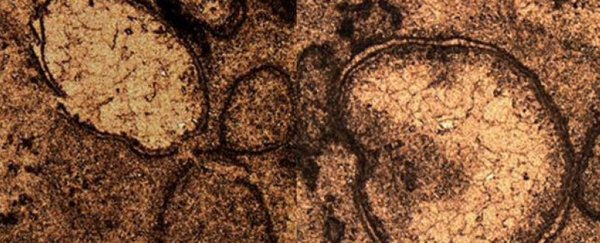Scientists have uncovered evidence in Australia of a gigantic asteroid that crashed into Earth billions of years ago, and say the impact could have been even more devastating than the collision that's thought to have contributed to the decline of the dinosaurs some 66 million years ago.
Researchers have discovered tiny glass beads called spherules buried deep under the ground in Western Australia, which are thought to be the remnants of vaporised material from when a colossal asteroid smashed into Earth more than 3 billion years ago.
"The impact would have triggered earthquakes orders of magnitude greater than terrestrial earthquakes," said earth and paleoclimate scientist Andrew Glikson from the Australian National University's Planetary Institute. "[I]t would have caused huge tsunamis and would have made cliffs crumble."
While evidence for the asteroid impact has been found in Western Australia, that doesn't necessarily mean that this site was ground zero for the collision, the researchers report.
"Material from the impact would have spread worldwide," said Glikson. "These spherules were found in sea floor sediments that date from 3.46 billion years ago."
The researchers think that the asteroid – the second-oldest known to have hit the planet – would have measured between 20 to 30 kilometres across, and the crater resulting from its impact could have extended for hundreds of kilometres.
For comparison, the hypothesised dinosaur-killing impact crater created some 66 million years ago – and currently being studied in the Gulf of Mexico – measures about 180 km in diameter. Still gargantuan, of course, but not as massive as the dent thought to have been left by this rock a few billion years beforehand.
"Exactly where this asteroid struck the earth remains a mystery," said Glikson. "Any craters from this time on Earth's surface have been obliterated by volcanic activity and tectonic movements."
The researchers found the spherules by drilling underneath Marble Bar, a town in the Pilbara region of north-western Western Australia. The glass beads were extracted from sediment that would originally have been found on the ocean floor, but over time came to be preserved between two volcanic layers under the surface.
When the team analysed the samples in the lab, they found traces of platinum, nickel, and chromium, matching levels previously found in asteroids. But while locating and dating the spherules is a major find, there's still a lot we don't know about what happened here – such as where the impact occurred, and what effects the collision ended up having on the planet in the long run.
"This is just the tip of the iceberg. We've only found evidence for 17 impacts older than 2.5 billion years, but there could have been hundreds," said Glikson. "Asteroid strikes this big result in major tectonic shifts and extensive magma flows. They could have significantly affected the way Earth evolved."
The findings are reported in Precambrian Research.
